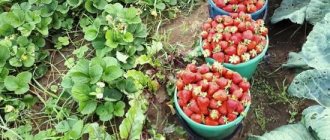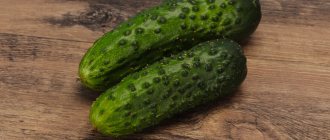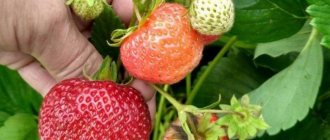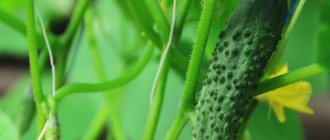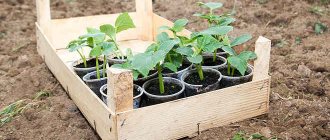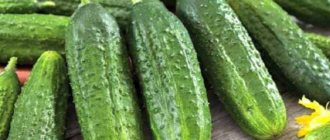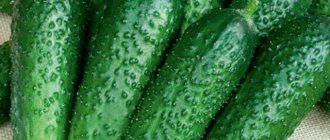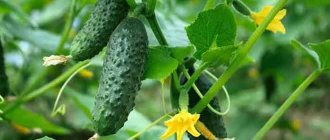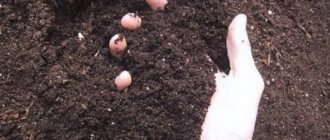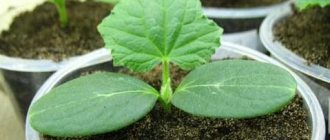Main characteristics of the Furor variety
Strawberry Furor stands out from the many Dutch daylight-neutral varieties due to its increased productivity, remarkable appearance of the fruit, wonderful strawberry taste and large fruit.
The variety is remontant, that is, it bears fruit several times a year, from early spring to late autumn. Suitable for both private and industrial cultivation. For commercial purposes, “Furor” is simply a godsend, because it tolerates transportation well and is perfectly stored.
Strawberries are successfully used for fresh consumption, as they have an unsurpassed taste. In addition, all kinds of preparations for the winter are prepared from it: preserves, jams, jellies. Strawberry Furor is an excellent product for freezing.
Reviews from gardeners
First of all, gardeners who have already tried to grow the Furor variety note its excellent productivity, especially in the first period of fruiting, early ripening, good keeping quality and transportability. The marketable appearance and the possibility of obtaining a high yield make it possible to grow these strawberries for sale on farms.
Harvesting, carried out by a remontant variety several times a season, greatly wears out the plant, which can even lead to its death. Therefore, caring for Furor strawberries should be more thorough. But as a result, remontant garden strawberries will be rewarded with the prospect of enjoying delicious berries from their garden for a long period.
Distinctive features
The Furor strawberry bushes have a neat, compact appearance. The leaves are large, oval, with wide teeth, rich green. Peduncles are long, with countless ovaries. The flowers are snow-white, bisexual.
This strawberry produces little mustache, like many day-neutral varieties. To increase arborization, it is recommended to remove the peduncles of the first wave. The uniqueness of “Furor” is that new shoots of inflorescences grow very quickly.
The berries grow conical, elongated, standard shape. There are no giant fan-shaped fruits - all one-dimensional. The neck is small or absent altogether.
The color of the Furora fruit is bright red, with a lacquered sheen, and appetizing. The pulp is juicy, dense, sweet, with sourness. The weight of the fruits of the first harvest is on average 35-40 grams. Subsequent ones produce smaller fruits. The shape of the berries at the end of the season is no longer so elongated and takes on a more rounded appearance.
One of the main features of the “Furor” variety is that the fruits do not lose their unique taste even during rainy periods, and by the end of the season they remain just as sweet, which is not typical for remontant strawberries. Moreover, strawberries retain this feature even in unfavorable climatic conditions in open ground.
Characteristics of the berry
- The berries have the shape of an elongated cone and weigh 30-50g .
- At the beginning of fruiting they are approximately the same size and regular shape.
- By autumn they become slightly smaller and may become distorted.
- The berries have a bright red color and a glossy shine. The neck is short.
- The pulp is red, dense, juicy.
- The skin is strong, with small seeds.
- The aroma is pronounced.
- The taste is rich, harmonious, without sourness, reminiscent of ripe strawberries.
- The sugar content is high.
Important! Strawberry Furor is recommended for gardeners who are disappointed in other remontant varieties. The berries of this variety do not have the characteristic crunchiness.
Advantages:
- the sugar content does not decrease during the season. The fruits continue to be sweet;
- do not darken or weather when stored in the refrigerator;
- retain taste and aroma for a long time;
- have a high rate of transportability.
Productivity
The Furor strawberry bears fruit very consistently and almost continuously. It begins in open ground in mid-May and ends at the end of October. A short two-week break is observed after the harvest of the first wave.
Ripening depends on the climate in which it is grown, but it should be noted that among all the remontant varieties, “Furor” is one of the earliest.
The originators of the variety reported an approximate yield - 1.8 kg of fruit can be harvested from a bush of this strawberry. This result can be achieved by using appropriate agricultural technology, and many summer residents confirm this.
Beginning amateur gardeners receive up to 1.4 kg of harvest from one plant for the whole year, and this is a very worthy achievement.
Description of the strawberry variety Evis Delight
The hybrid was bred in England in 2004 as a remontant strawberry variety as part of Edward Vinson's breeding program. Breeders were tasked with crossing varieties that could provide improved taste and adaptation to different climatic conditions, while ensuring high preservation of fruits. In 2010, after testing, the Evis Delight variety was patented and approved for sale.
The name Avis Delight translated from English means “Eve’s delight.” It reflects the achievement by breeders of the goal of improving the taste of strawberries. In addition to taste, the berries have a strong strawberry aroma and are characterized by increased shelf life.
The berries of the Evis Delight variety have a cone-shaped shape. After ripening, the fruits become bright red, with dense pulp. Weight can vary from 30 to 40 g. A distinctive feature of the variety is the arrangement of peduncles, which are directed strictly upward and slightly overlap the level of the leaf blades.
The bush is classified as large: the average height is about 400 mm. The variety's cultivation is below average, so the bushes take up little space, making them look compact.
Landing
It is possible to plant plants of the “Furor” variety with a closed root system all year round, but with an open root system, it is advisable to plant seedlings at the end of summer. Such planting in the summer will allow the seedlings to get stronger and confidently bear fruit next year.
The place for planting strawberries should be located on a flat, slightly elevated area, sunny, with loose, non-acidic soil.
The bed is prepared 3-4 weeks before planting: weeds and roots are removed, organic and mineral fertilizers are applied, and they are dug up. For organic matter, a diluted mullein infusion (1:10) is suitable, for mineral additives – wood ash 91 cups per 1 sq. m. m).
Strawberries of this variety are planted according to the following scheme:
- between seedlings 25 cm;
- between rows 60 cm;
- maximum 4 rows per bed;
- staggered planting order.
Before planting strawberries, water is poured into each hole so that the soil does not pull the bush below the root collar. It is unacceptable to fill the center of the plant with soil, since that is where the growth point is located.
Watering and care
With good care, Furor strawberries bring huge returns. No labor-intensive activities are required. All you need is timely watering, loosening, weeding and fertilizing.
Regular watering has a significant impact on the yield of Furor. Drought is undesirable for this variety. It is watered at a slightly increased frequency than other types of strawberries. After planting in open ground, young bushes need to be watered every day for a week with warm water. Then the frequency of watering is reduced to 2 times a week. You can reduce the frequency of watering if you mulch the soil with straw, sawdust, and pine needles, which retain moisture in the soil.
After watering, the soil should be loosened. Loosening is necessary to saturate the root system with oxygen and remove the resulting earthen crust.
Removing weeds is an important step in caring for strawberries. Weeds interfere with normal plant growth and attract pests. Timely weeding helps active flowering and fruiting. To simplify weed control, many farmers use black agrofibre, covering the beds with it and making holes for each seedling.
How to grow Furor garden strawberries on a plot
Preparing a bed for planting strawberry seedlings. The planting site is selected with the expectation that it will be well illuminated by the sun throughout the entire period of plant growth. The soil is preferably sandy or loamy. On heavy soils, adding sand is advisable. The bed should be prepared in advance, in the fall. To do this, the land is cleared of weeds and rhizomes of plants previously growing in this place, dug up, and humus and phosphorus-containing fertilizers are applied. After winter, in early spring, rotted manure is applied to the planned planting site.
Planting seedlings . Seedlings of remontant Furor strawberries can be planted in a prepared bed both in spring and autumn. Water is poured into the hole and the roots of the plant are immersed in the resulting mud.
Advice. Between the rows of strawberries you can plant rows of garlic, which will repel pests with its smell.
Basic care consists of systematic loosening of the soil, watering and fertilizing. Repeatedly fruiting varieties need more watering than ordinary strawberries. Plants need to be watered especially carefully on hot summer days. At this time, the soil should be constantly moistened to a depth of 2-3 cm.
Advice. It is better to mulch plantings of remontant varieties. This will retain moisture well and maintain the breathability of the soil.
You can feed at the same time as watering with infusions of wormwood and nettle. This will give the strawberries the required microelements.
Gardeners note the excellent yield of the Furor variety
Top dressing
Remontant strawberries of the Furor variety require frequent feeding. Continuous supplementation is beneficial for:
- improving fruit quality;
- accelerating growth;
- ensuring preparation for wintering;
- increasing the speed of berry ripening;
- reducing the risk of disease;
- rescue from pests;
- obtaining a normal harvest.
Organic matter is applied three times a season: first in the spring, then after the first harvest, and the last time at the end of summer. Diluted infusions of chicken manure or mullein are suitable.
Enrichment with useful substances and microelements, as well as raising and strengthening the immunity of plantings is done by feeding with water infusions of herbs: nettle or wormwood. Fill 2/3 of the bucket with herbal mass, add water and leave for 3 days. Then pour 0.5 liters under each strawberry bush. solution diluted 5 times.
For nutrition, they also resort to using ready-made mixtures of complex fertilizers, which can be purchased at a specialized store. In total, about 8 feedings are necessary during the growth and fruiting stage.
Protection against diseases
The presented garden crop variety is resistant to all types of fungal diseases. However, despite the resistance of the “Furor” strawberry variety to diseases, it is still worth taking preventive measures. Use Bordeaux mixture (1%) or another preparation containing copper.
Spraying with a protective agent is carried out in the spring, before the start of the season and in late autumn. After the strawberries have finished blooming until the end of the season, there is no need to take preventive action.
Ready-made fungicidal preparations will be effective in the spring: Horus or Switch. And for autumn treatment they use Ridomil Gold, which will be useful for strawberry leaves before wintering.
Diseases and pests
It is highly resistant to various diseases and is little susceptible to pest damage.
Advantages:
- the variety is resistant to powdery mildew;
- almost never suffers from gray mold;
- resistant to diseases affecting the root system;
- rarely affected by thrips.
Attention! You can plant garlic between the bushes. The smell will repel pests.
Preparing for winter
Strawberry varieties bred in Holland are not winter hardy. But strawberries Furor are an exception to this rule. In regions with warm winters, this variety is not covered at all for the winter. In northern regions, where fairly low temperatures are observed, strawberries need shelter.
To protect against frost, many farmers resort to using a wonderful modern covering material - spunbond, which will reliably preserve strawberries in the winter.
Plastic film cannot be used, as it does not allow air to pass through well, thereby provoking the development of diseases.
Reproduction
To propagate Furor strawberries, the simplest method is often used - with a mustache. You need to choose a strong, developed mustache in the second year of life. They are considered the most viable. “Furor” produces few whiskers, so all available shoots are taken. The released mustaches should be sprinkled with soil for better rooting, and then replanted separately.
When using the method of dividing a bush, you must carefully ensure that each part of the separated bush has a sufficient number of leaves and roots. Berries on seedlings propagated in this way appear within a year.
It is possible to propagate “Furor” by seeds, but this is a very lengthy and ineffective process that is rarely used. Sowing seeds for seedlings is carried out in a container with prepared moistened soil mixture, which is covered with film. After 30 days, after the appearance of small sprouts, the protective film is removed. The seedlings dive into small cups when they produce 2-3 leaves. Watering the seedlings is carried out from a spray bottle. It is unacceptable for drops to get on the sheets. Seedlings can be planted in open ground when 5-6 leaves appear.
Advantages and disadvantages
The garden culture of the described strawberry variety is characterized by a significant number of advantages.
- Long-term fruiting.
- Large fruit (average weight 35 g).
- Early ripening.
- Possibility of cultivation in closed ground.
- Regular, beautiful, elongated berry shape.
- Excellent yield with proper care.
- Remarkable heat resistance, berries are not subject to caking in the sun.
- Disease resistance.
- Sweet and sour, excellent taste.
- Dense, without crunch, fruit pulp.
- Excellent transportable properties.
- Long shelf life.
There are also several disadvantages to the Furor strawberry, but compared to the abundance of advantages, there are very few of them:
- on acidic soil, “Furor” grows poorly, not fully revealing its potential;
- an intensive variety that requires proper fertilizing and frequent watering;
- The berries of the latest wave grow a little smaller and have a different shape.
Taking into account how large a harvest this variety of strawberries produces, all comments about the shortcomings can be taken into account and corrected by properly caring for the berry crop.
How to choose the right variety for yourself and not make a mistake
As you know, the first pancake is always lumpy, but in the case of growing strawberries, this mistake can be avoided. Provided that you adhere to some recommendations, which we will now discuss in detail.
Rationally calculate your strengths and capabilities
If you know that you cannot devote enough time to fully grow strawberries, then you should not choose remontant varieties. They will have to be looked after much more often and more intensively, and if this is not done, the plant will stop developing. However, you can be content with a good harvest if you choose varieties that are not picky about care.
Don't get stuck on one variety
Did you like a certain variety? Then it’s time to find several other varieties that will bear fruit at different times and give you a stable harvest for two months
When choosing them, pay attention to taste, size and other characteristics so that the resulting berry harvest is varied and suitable for various purposes.
Pay attention to the mark “Durability”
Despite the fact that many varieties of strawberries successfully resist all kinds of pests and diseases, it would not be superfluous to make sure of this when purchasing seeds of the varieties you like. It is possible that the varieties you choose will lack these characteristics, so you will have to spend more time and effort to protect them.
This does not mean that all varieties, first of all, must be resistant to pests and diseases, and other characteristics fade into the background. But the main part of your country strawberries should be just these varieties.
Put taste above external characteristics
If you grow strawberries for yourself, then your priority will be to find varieties with tasty and aromatic berries rather than ones that are beautiful and ideal in appearance. Farmers who grow on an industrial scale operate in a completely different sequence. But if you try, you can find varieties that are equally beautiful in taste and appearance.
